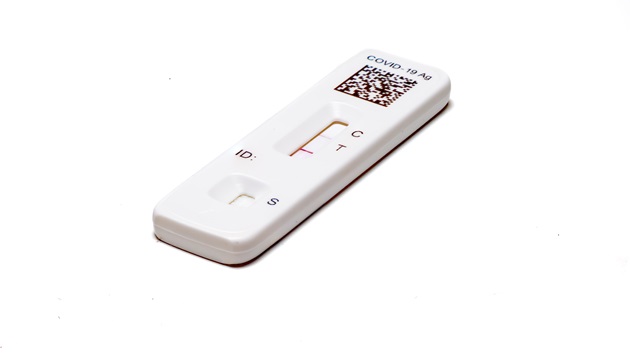
(NEW YORK) — COVID-19 cases are ticking up in the U.S. as children head back to school and the country prepares to enter the colder weather months.
For the week ending Aug. 9, the COVID hospitalization rate was 1.7 per 100,000, double the rate from two months ago, according to data from the Centers for Disease Control and Prevention.
Additionally, for the week ending Aug. 23, 11.2% of weekly tests came back positive for COVID, up from 3.3% the prior two months, CDC data shows.
Despite the increases, metrics remain much lower than in previous years.
Hospitalization rates are about three times lower than at the same time last year and the percentage of weekly tests coming pack positive is about two times lower compared to the same period last year.
Additionally, over the past two months, roughly 200 Americans have been dying from COVID every week, according to CDC data.
There has been confusion over who may be able to receive a COVID vaccine after the Food and Drug Administration approved updated versions of those shots for those over age 65 and younger Americans who are at high risk for severe disease. Federal health officials have insisted that anyone who wants the shot can receive it.
CDC data shows test positivity has increased above 10% in much of the southwest and western U.S. as kids head to class.
“When the dust settles, I expect it to not be as bad as last year … but that still means that some people are getting sick,” Dr. Peter Chin-Hong, a professor of medicine and an infectious diseases specialist at the University of California, San Francisco, told ABC News. “Fewer people are getting hospitalized, proportionately speaking, but some people are still being hospitalized.”
“The reason why we’re seeing the increase is because of the usual factors of more than six months since a lot of people got COVID [and] new variants,” he continued.
As of the week ending August 30, XFG, an offshoot of the omicron variant, is the dominant variant in the U.S., accounting for an estimated 78% of new COVID cases.
Meanwhile, NB.1.8.1 and LP.8.1, also omicron variant offshoots, make up 14% and 3% of estimated new COVID cases in the U.S., CDC data shows.
Dr. William Schaffner, a professor of preventive medicine and of medicine at Vanderbilt University School of Medicine, told ABC News that because the currently circulating variants are all members of this omicron family, there are no major mutations that make the virus more transmissible or more infectious.
“You can think of them all as cousins,” he said. “Now these cousins do share a couple of characteristics, one is that they appear to be fairly contagious and are quite capable of producing a great deal of mild disease. By mild, I mean not serious enough to get you into the hospital.”
Schaffner continued, “Fortunately, the vaccines that will become available this fall … should provide reasonable protection against serious disease caused by these variants.”
In a press release, Pfizer-BioNTech said its 2025-2026 COVID vaccine will target the LP.8.1 sublineage in line with FDA guidance to more closely match circulating strains.
It remains unclear how COVID vaccinations will be rolled out in the U.S. Recently, CVS said how it offers the shots will vary by state due to “the current regulatory environment.”
In 34 states, Americans can receive the COVID vaccine at a CVS pharmacy. In 13 states and in Washington, D.C., Americans can be vaccinated, depending on age, with a prescription. In three states – Massachusetts, Nevada and New Mexico – the COVID vaccine isn’t being offered.
Chin-Hong said he is worried about low vaccination rates as the country heads into respiratory virus season during the fall and winter months.
“As vaccination rates decline, from both people’s desire as well as structural barriers that are being put up by the federal government, it means that fewer people are going to get vaccines, even if people wanted to,” he said. “I’m worried that … it may mean that we would have some hospitalizations and deaths that we wouldn’t have seen normally if there was a simpler rule around vaccines.”
Schaffner said those who can receive the COVID vaccine should do so, along with the annual influenza vaccine, and advised those with risk factors for severe disease to be more cautious.
“You can get out your mask and put that on when you’re going indoors in crowded environments,” he said. “And if you’re really concerned, as I like to say, do some social distancing. Stream the movie rather than going to the movie.”
ABC News’ Youri Benadjaoud and Cheyenne Haslett contributed to this report.
Copyright © 2025, ABC Audio. All rights reserved.
